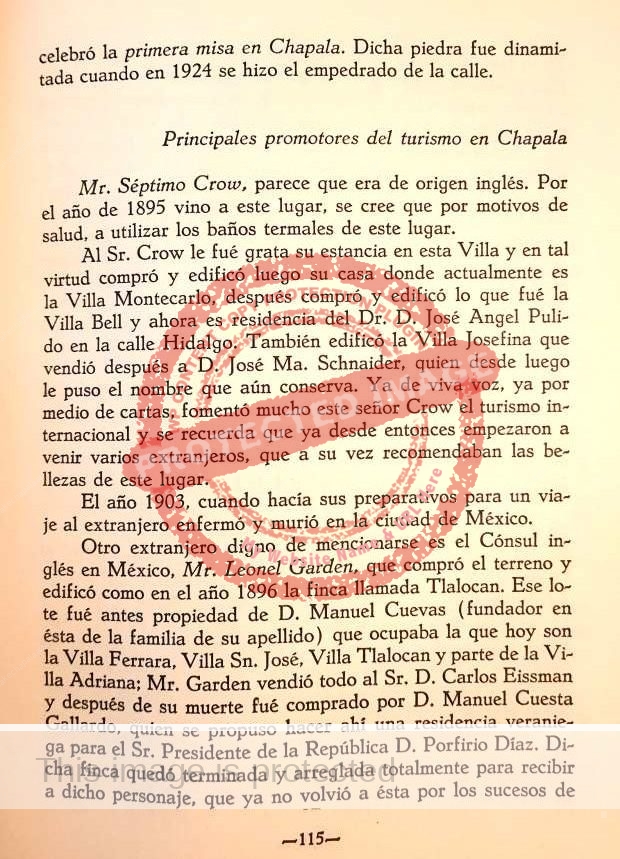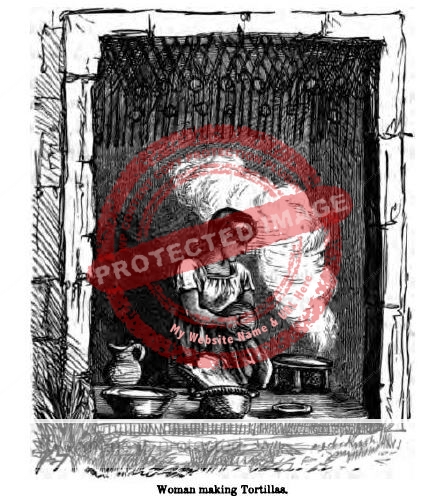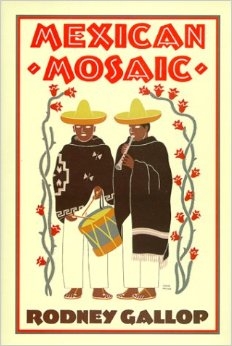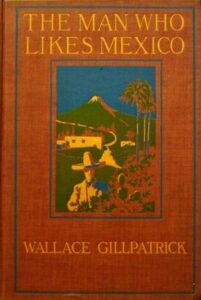One of the earliest literary mentions of Lake Chapala comes in “Ixotle,” a story by Andrew Jackson Grayson published in 1870. Here is the full text of the original article:
IXOTLE
During a sojourn in Tepic of some six weeks, for the purpose of making collections of Ornithology, I went into the almost impenetrable mountains of San Juan Guaya, and came to the old Mission of San Luis.
The little village was ensconced among the mountains, with bold and magnificent scenery. Cultivation of maize and beans in small patches abounded everywhere. The village consisted of some adobe houses, and numerous jacals; the population, of half-civilized Indians. In the centre of the village was a very ancient, but small church, built of stone. The roof and its rough walls were overgrown with plants, giving it an air of age and decay. In the adjoining building I was shown the venerable Cura, whose form, that had been once tall, seemed to be as ancient as the dilapidated building that sheltered him. Though age told upon him, as his gray hairs and care-worn visage fully attested, he yet possessed that vigor of mind and keen memory we often find in the persons of those enthusiastic ecclesiastical recluses who have wandered into the very depth of the wilderness, to subdue the savage to Christianity and civilization.
The old man had dwelt in this spot for forty-eight years, endeavoring to tame these wild Indians, and induce them to adopt that partial civilization and Christianity to which most of the native Mexicans have been brought, but in vain; they still retained their ancient customs to a considerable degree, and were known as Sozado’s wild Indians, who scorned to associate with their neighbors of the lowlands. They venerated the old Cura, and many attended his church on Sundays; but they cared very little for Christianity, and nothing for civilization.
I found the Cura to be a very intelligent man, and a Spaniard by birth. He appeared to take much interest in my collections of Natural History, upon which subject I found him better informed than most people in that region. He told me of the different species I would find in those mountains: of birds of resplendent plumage —of birds that sang, and those without song —and he knew all their Indian names. At length he said: “You ought to visit the islands of the Tres Marias. There you will find the forest full of birds, and so tame as to be taken by the hand.” I replied that I had already been there, and what he said was true; for I had discovered some rare birds, and made a fine collection.
After some conversation upon these Islands, of which be had heard much, but had never seen, I at length asked him why so beautiful a spot should have never been populated, either by native aborigines or modern Mexicans? In reply he then told me the following tradition, which was related to him by an old Cacique of the tribe that once inhabited these mountains, but long since dead:
“Señor,” said he, “these islands were held sacred by the ancient Mexicans of the west, or coast region, and dedicated as a place of worship to the God of the Storms of the Sea, Tlaxicoltetl: here he dwelt, and here he governed the whirlwind and the storm.
“One human victim—a virgin or youth —was offered as a sacrifice upon the rough-hewn coral altar annually, on St. John’s day, the 24th of June, which is about the commencement of the stormy, or rainy season. This offering was made to appease the wrath of Tlaxicoltetl and supplicate protection to the fishing canoes that supplied the vast interior with fish and pearls, camarones and oysters, of which the coast tribe held independent possession. The pearls obtained in various localities of the Gulf of California, together with other beautiful shells for ornaments, were carried even to the great Aztec city of the lakes, Mexico. This was long before the White Man was known. Many well-trodden foot-paths penetrated to the interior from the seashores in the vicinity of Tepic; and where San Blas now stands (then called Jualtelotepec)—where is a precipitous cliff, which now forms the background of San Blas, and where once stood the old Spanish town and fortifications—was the principal rendezvous of the fishermen. From this locality a large, well-beaten trail extended through Tepic on to where Guadalajara now stands, and where then stood a large city, which was called Chapala.
“The lake near Guadalajara is still known by that name; and the Indians found near its borders, who yet live in a semi-barbarous state, are called to this day Chapalo Indians, and are a very degraded, thieving race. But previous to the conquest, they were a numerous and industrious people—well skilled in the manufacture of articles of utility. Cotton cloths, both coarse and fine, were largely manufactured by them, as also various kinds of pottery; and their dressed deer-skins were of a superior quality. These kinds of goods were bartered with the Tepic Indians for fish, pearls, etc.
“Their principal town was where the beautiful city of Guadalajara now lifts its numerous church-spires proudly over the once heathen temples of human sacrifice. It was then a large city, and continues to be second only to the Capital.
“Just before the corning of the White Man, or conquistador, there lived in the city a beautiful young girl of sixteen. She was called Ixotle (‘the drooping flower’). She was remarkable for her intelligence, and the sad and melancholy expression of her face; and was chosen by the idolatrous priests as one of the sacred virgins of the many to assist at the disgusting fêtes of human sacrifice. But when the time came for her attendance, together with her sister virgins, upon one of these cruel displays of human depravity, she refused: no persuasions or threats could induce her to join the others in ceremonies over the torments and sufferings of her fellow-creatures. But she was forced by the priests to follow in their procession, and go through the performances around the altar allotted to them. She was looked upon as strange for refusing so high an honor; but she felt the disgrace, wrong, and dark religion of her people, whose ritual of polytheism and their revolting worship would sooner or later be avenged by the great and true God. On her part, she went through the performance with the other virgins, with a saddened heart and dejected mien, until the priest, with gory hands, had pronounced it finished.
“She then stepped forth from the platform near the bloody altar, and with her hand raised toward heaven, said, in a tender, but distinct voice, ‘Behold, 0 thou priest of this hated temple! The Great God and Father of all looks with anger upon these bloody sacrifices, and the worship of these ugly stones which ye call gods. 0, ye priests and worshipers! I warn ye: let this be the last of your bloody sacrifices; for toward the rising sun a people with white faces and long, red beards are coming — they are already on the march. They carry in their hands the lightning and the thunder, with which they will demolish your
great temples. They are sent by the true God. Not a stone will be left; and on their sites will be erected white temples—the pure temples of the true and only God. Beware, then, and let this be the last of human sacrifice!’
“It may be imagined,” said the Cura, “with what awe these wicked priests gazed upon that divine figure who dared make such prophecy even in presence of their stony gods. She was regarded as a false prophetess, or witch, and sold to the Tepic nation, to be sacrificed upon the burning altar of Tlaxicoltetl, the God of Storms.
“The day at length arrived for the voyage to the islands. It was the 20th of June: on the 24th of that month the sacrificial offering was to take place.
“Twenty large canoes, ornamented with pearls and other beautiful shells of the gulf, contained the priests and virgins: they were the sacred canoes, and in one of these sat the beautiful Ixotle, gorgeously dressed In native costume, and adorned with the brightest of pearls. A drooping flower indeed, but with the look of an angel amid her rough attendants! As the sun disappeared below the calm and glistening sea, these canoes departed in the direction where the sun had gone down, followed by a numerous assemblage of other canoes. At the expiration of two nights and one day they reached the place of the temple dedicated to their storm-god. It was in a secluded little cove upon the eastern portion of the most northerly island, now called Maria Madre.
“The temple, or altar, was of rude construction, pyramidical in form; upon which stood the idol, huge and uncouth, in the shape of a human being. It was hollowed out, in order that the flames kindled within might give a more hideous expression to the face, by lighting up the round holes for the eyes and open mouth.
“It was a gloomy-looking spot, overshadowed by the large trees that abound on these islands. Darkness had closed the day, and the silence of the hour was only broken by the dull moaning of the sea and distant murmuring of thunder.
“The time had come for the sacrifice. Torches were lit around the altar, and, as the dull light of the idol grew into flames of fire, the victim was led to the top of the altar, in front of the idol, where she was permitted to stand, that all might gaze for the last time upon her lovely form.
“While thus standing, she turned to the audience, and again related her prophecy of the coming of the White Man, and reiterated her belief in the true and only God of all. She deprecated the foul and disgusting worship of her people, and said the time was near at hand when the Great Creator would terminate this evil practice. When she had finished, there was a deep silence—nothing was heard but the roar of the sea and the approaching tornado. Suddenly, it burst upon the spot with a terrific crash of thunder and lightning, accompanied with furious rain, while the overpowering wind caused the great trees to bend and sway like reeds, the very earth to tremble, and the forest to howl.
“The lights were soon extinguished by the wind and rain, all save that within the hollow idol, which, shining through the eye-holes and distended mouth, gave to the scene an indescribably weird aspect. Ixotle, still standing upon the altar, turned her face up to the mountain, where she beheld a singular apparition of vapory light, amid which the lightnings played and the thunder deafened— and thought she saw the figures of pale-faced men with long beards. Turning to the people, at the same time pointing in that direction, she cried aloud, ‘Behold! there they are! they have already come!’ At that instant, a flash of lightning struck the tree near which stood the idol, shivering tree and idol into atoms. The girl bounded from the altar, and fled into the dark forest.
“The priests and panic-stricken worshipers took to their canoes, amid the raging storm and angry sea. After they had departed from the shore, they looked back upon the island. The mountain seemed to be lit up in ablaze of ghastly, unearthly light; those vapory clouds presenting to their affrighted minds a strange phantasmagoria as of men and beasts, among which they thought they saw the form of their victim, ‘the drooping flower.’
“The storm raged all night; but two of the canoes reached the main-land, the occupants having undergone for several days much suffering. After their rescue they related what had happened, and heard with amazement that the girl’s prophecy had already come to pass! The White Man had arrived in Mexico. From that time forth no more sacrificial offerings were attempted on the island: ‘the God of the Sea-Storm’ was destroyed. Henceforth, according to the tradition of the locality, these attractive shores bore the ominous appellation of ‘the Haunted Isles,’ and were ever after shunned by every Indian with superstitious dread.
“The vapory, or phosphorescent, light which so frightened the idolaters from their intended sacrificial offering of the unhappy virgin, still makes its appearance when the first storms after the long, dry season moisten the earth and exuberant, decaying vegetation, in which, according to Indian superstition, the spirit of Ixotle still dwells.”
Such was the strange legend, deeply dyed with romance, as told me by the aged Padre of the Mission of San Luis. It may have been much exaggerated through its long repetition, but at the same time there would appear to be some foundation for its truthfulness.
I have myself seen the phosphorescent vapors. On returning from my first visit to the Socorro Island, in the month of June, three years before, we passed between the two main islands, and during the night of the 24th were overtaken by a chubasco, or tornado, which threatened our destruction. We were drenched with the rain and spray, and the ocean was white with foam, the wind furious, and the lightning awfully vivid. We could not carry sail, yet we were driven before the wind like a feather—our little craft plunging madly through the surge. I was holding the light, and the compass on my lap, down In the little cabin, and calling out the course to the Captain, that be might know how to steer. He suddenly called to me, and said the island was in a blaze of light. I looked out, and saw the strange phenomenon. It appeared in many places as if enshrouded in a pale, ghastly light of mist, which, swayed and moved by the wind, produced curious and fantastic figures of unearthly appearance. The storm was of short duration. The sea became again quiet, and the clouds less lowering, but the vapors still hovered over the island.
– – –
Source
- Andrew J. Grayson. 1870. “Ixotle.” Overland Monthly and Out West Magazine, vol. V, #3, (Sept 1870), 258-261.
Lake Chapala Artists & Authors is reader-supported. Purchases made via links on our site may, at no cost to you, earn us an affiliate commission.
Learn more.
Several chapters of Foreign Footprints in Ajijic: Decades of Change in a Mexican Village offer more details about the history of the literary community in Ajijic.
Comments, corrections or additional material related to any of the writers and artists featured in our series of mini-bios are welcomed. Please use the comments feature at the bottom of individual posts, or email us.
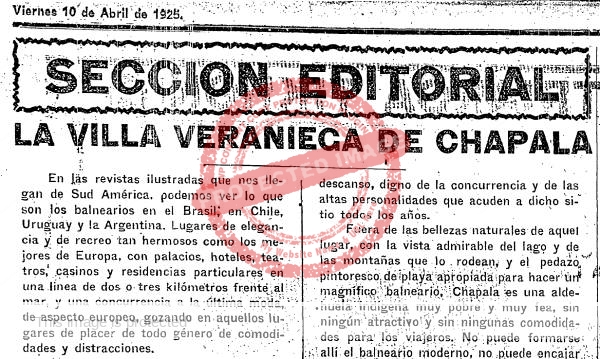
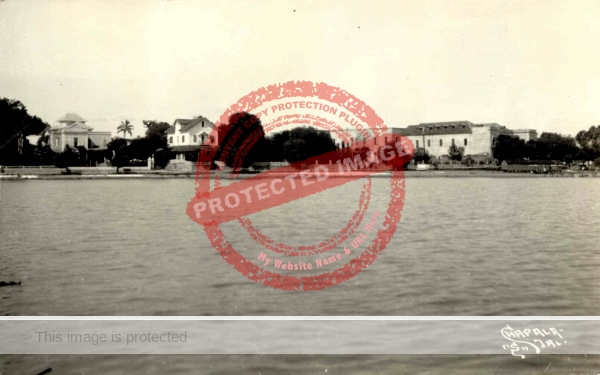
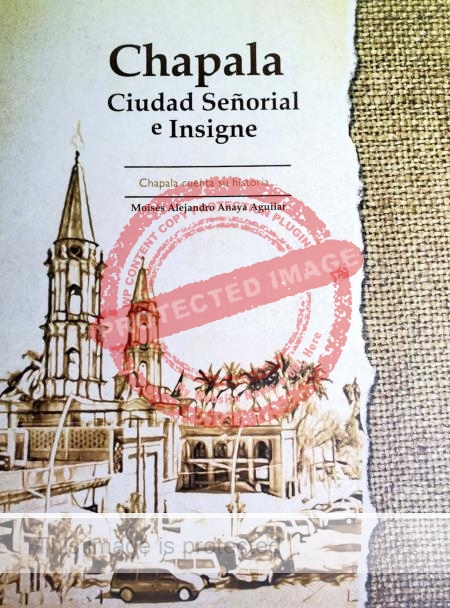 Its publication was timed to coincide with the designation of the City of Chapala as a “Ciudad Señorial e Insigne” (Stately and Distinguished City). The book has contributions by various writers and historians on a wide range of topics, from the early (precolonial) history and evangelization, to the events on Mezcala Island during the fight for independence, as well as details of the lives and contributions of certain key individuals to projects that established Chapala’s enduring appeal.
Its publication was timed to coincide with the designation of the City of Chapala as a “Ciudad Señorial e Insigne” (Stately and Distinguished City). The book has contributions by various writers and historians on a wide range of topics, from the early (precolonial) history and evangelization, to the events on Mezcala Island during the fight for independence, as well as details of the lives and contributions of certain key individuals to projects that established Chapala’s enduring appeal.